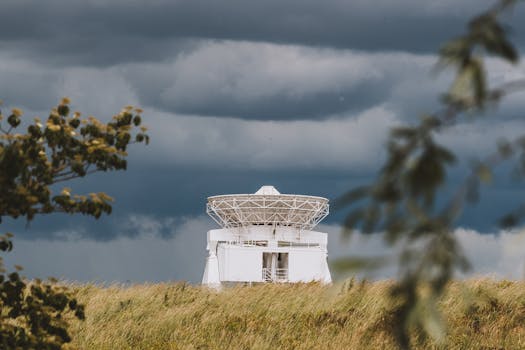
GEO Satellites: Unlocking the Power of Geostationary Orbit
GEO satellites, or Geostationary satellites, are a type of satellite that orbits the Earth at an altitude of approximately 36,000 kilometers, which allows them to remain stationary relative to a fixed point on the Earth’s surface. This unique characteristic makes GEO satellites an essential part of modern satellite communication, providing a wide range of services including television broadcasting, telecommunications, and weather forecasting. In this article, we will delve into the world of GEO satellites, exploring their history, applications, and the benefits they offer.
GEO satellites have been in use for several decades, with the first geostationary satellite, Syncom 2, launched in 1963. Since then, the technology has evolved significantly, with modern GEO satellites capable of carrying large payloads and providing high-speed data transmission. The geostationary orbit is a unique region in space where the orbital period of a satellite matches the Earth’s rotational period, allowing the satellite to remain stationary relative to a fixed point on the Earth’s surface. This characteristic makes GEO satellites ideal for a wide range of applications, including television broadcasting, telecommunications, and weather forecasting.
Applications of GEO Satellites
GEO satellites have a wide range of applications, including television broadcasting, telecommunications, and weather forecasting. Television broadcasting is one of the most common applications of GEO satellites, with many television channels relying on these satellites to transmit their signals to a wide audience. Telecommunications is another significant application of GEO satellites, with many companies using these satellites to provide internet and phone services to remote and underserved areas. Weather forecasting is also an important application of GEO satellites, with these satellites providing critical data on weather patterns and storms.
In addition to these applications, GEO satellites are also used for navigation, earth observation, and scientific research. Navigation systems such as GPS rely on GEO satellites to provide location information and timing signals. Earth observation satellites use GEO satellites to monitor the Earth’s surface and track changes in the environment. Scientific research is also an important application of GEO satellites, with these satellites providing a unique platform for conducting scientific experiments and gathering data on the Earth’s atmosphere and space environment.
Benefits of GEO Satellites
GEO satellites offer a wide range of benefits, including global coverage, high-speed data transmission, and reliability. Global coverage is one of the most significant benefits of GEO satellites, with these satellites able to transmit signals to a wide audience across the globe. High-speed data transmission is another important benefit of GEO satellites, with these satellites capable of transmitting large amounts of data quickly and efficiently. Reliability is also a key benefit of GEO satellites, with these satellites designed to operate for extended periods of time with minimal maintenance.
In addition to these benefits, GEO satellites are also relatively low-cost compared to other types of satellites. The cost of launching and operating a GEO satellite is significantly lower than the cost of launching and operating a satellite in a lower orbit. This makes GEO satellites an attractive option for companies and organizations looking to provide satellite-based services. Furthermore, GEO satellites are also relatively easy to maintain and repair, with many components designed to be replaced or upgraded in orbit.
Challenges and Future Directions
Despite the many benefits of GEO satellites, there are also several challenges associated with these satellites. One of the most significant challenges is the risk of satellite collisions, which can cause significant damage to the satellite and disrupt services. Another challenge is the increasing congestion in the geostationary orbit, which can make it difficult to find available slots for new satellites. The high cost of launching and operating a GEO satellite is also a significant challenge, particularly for small companies and organizations.
Looking to the future, there are several trends and developments that are likely to shape the GEO satellite industry. One of the most significant trends is the increasing use of small satellites, which are smaller and less expensive than traditional GEO satellites. Another trend is the growing demand for high-speed data transmission, which is driving the development of new technologies and services. The increasing use of satellite-based services in emerging markets is also a significant trend, with many companies and organizations looking to provide satellite-based services to underserved communities.

